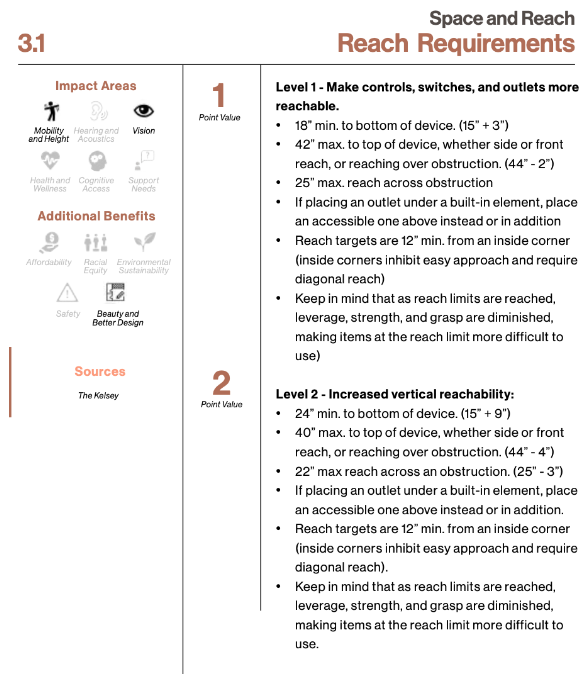The Kelsey created Inclusive Design Standards while building disability-forward housing at The Kelsey Ayer Station in San Jose. This month’s Element of the Month is from Diane Dittmar, our project manager and Vice President at Sares Regis Group. Diane has a long career in housing development and understands the diversity of choices a developer must make across a project’s lifecycle to support accessibility and inclusivity. Here she shares a simple but impactful element that can be applied in housing projects regardless of budget: Reach Requirements.
Name / Affiliation: Diane Dittmar / Asst VP / Sares Regis Group of Northern California
Diane Dittmar, Assistant Vice President of Sares Regis Group of Northern California, The Kelsey’s Development Partner on the Ayer Station project, explains why Reach Requirements are a beloved element of hers.
Name of Element: Reach Requirements (3.1)
Description: Make controls, switches and outlets more reachable.
Design Category: Building Components
Impact Area(s): Mobility & Height; Vision
Why is this element important to you, personally or for the project?
Installing outlets and controls where everyone can reach them just makes sense and it doesn’t add cost. I love incorporating elements into projects that might be different, but are, just hands down, better.
How did this accessibility element change (for the better) the overall project (optional)?
The Kelsey Ayer Station has many accessible elements that make it a fantastic, standout development. I chose this one because every developer can do it on every project regardless of their budget and make their built environment friendlier.
What recommendations would you make to someone designing a disability-forward housing project (related to the design standards)?
Every developer faces financial pressures; it is hard to make projects pencil especially in this time of escalating prices. So, design from the inside out. Put accessible elements in first and not as an after-thought once the spaces are designed. Many of the features that have the most far reaching benefits require planning and creativity to incorporate but little or no extra cost.
